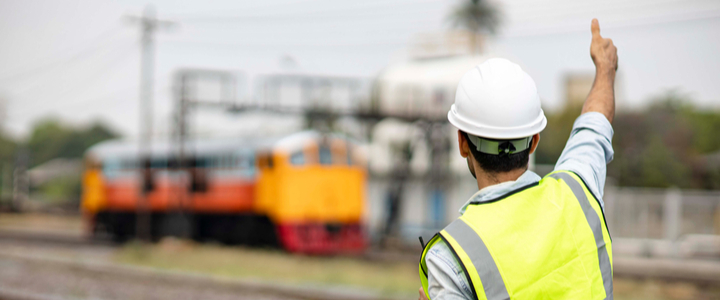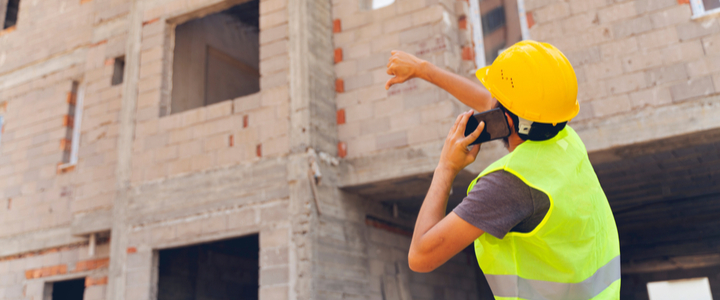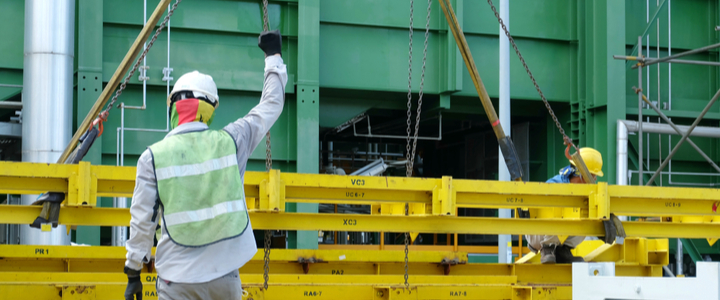Using hand signals plays an essential role in a construction company because it can help your team stay safe. It is crucial that your team knows, uses, and understands hand signals while on a work site. Here is a guide that will help you understand the importance of hand signals and how to properly use them.
The Importance of Construction Hand Signals
Using hand signals means that you are communicating without talking, which can be crucial in a loud area. This allows you to communicate when words cannot be spoken and ensure the safety of your team. Construction site hand signals can help you indicate when to stop, go, which way to go, and if there are any dangers to be aware of.
Commonly Used Heavy Equipment Hand Signals
Here is the best guide for you if you’re looking for a list of the most common hand signals to use in construction site safety. Working on any project, especially a crane operation, the most successful teams have good communicators and coordination skills. Take a look at these common hand signals and make sure your team masters them.
1. Stop Signals
STOP – To ensure the crane stops, you will lift your arm straight to the side and your palm down. Then you will swing the arm. This indicates to the operator the crane needs to stop before it continues again.
EMERGENCY STOP – However, if there needs to be an emergency stop, both hands will go straight out with palms flat and then swing back in forth. If all activity needs to stop, the main person will clasp hands and place them at their waist.
2. Boom Signals
These signals tell the crane operator which maneuvers to do. Though to many people the term boom isn’t something they look forward to hearing, there is no booming involved.
RAISE BOOM – The first boom signal is a motion that will raise the crane. The person directing will extend their arm outward, close their fist and point their thumb upwards.

SWING BOOM – The signal person will extend the arm outward, horizontally, and use the index finger to point the direction. This will tell the other operator which direction the crane should swing.
LOWER BOOM – To indicate the operator needs to go lower, the director will hold their hand horizontally, do a fist and point their thumb downward.

EXTEND BOOM – The last boom signal tells the operator to extend the crane. The signal person will hold their hands away from their waist, creating a fist with thumbs outwards.
3. Loader Hand Signals
This signal is just as important as the other signals. It tells the operator what to do with the load once it has officially been lifted. There are two signals to keep in mind when teaching your team.
HOIST LOAD – The first one is the hoist signal which means to raise the load further. The signal person will extend their arms upward or vertically and create a fist. Then they will stick their index finger in the air and make small circles.
LOWER LOAD – The second load signal is the same action in the opposite direction. This will indicate the operator should load downwards. The signal person will extend their arm horizontally, make their hands into a fist, and then make small circles with their index finger.
4. Travel Signals
Moving a crane can be dangerous, and someone needs to direct the operator on where to go. There are a few basic signals your team should be aware of and what they mean.

MOBILE CRANES – The indicator will point their hands up and arms extended outwards. They will then push in the direction the crane should go.
TOWER CRANES – the signal person will bend their arms upward at the elbow. With their thumbs, they will point in the direction of travel.
CRAWLER CRANES (BOTH TRACKS) – Crawler cranes will have a signal person who turns their hands into fists. They will put them in front of their waist and rotate their hands. Rotating towards their body means the crane should go forward; away from their body means to go backward.
CRAWLER CRANES (ONE TRACK) – Travel on crawler cranes, but one track will require a person to signal whether to go backward or forwards. One fist should remain in front of the body while the other fist raises to the air to indicate which direction to move.
5. Speed Signals
SLOW DOWN – Speed can be controlled by the signal person. If the operator sees the signal person put one hand over the hand that’s doing the action, it means to slow down. This can be a crucial signal for safety.
Benefits of Universal Construction Hand Signals Training
Hand signals for construction equipment are a good way to ensure safety on a site and among your construction crew. It allows your team to communicate from a distance without words and can promote safety. There are some universal hand signals that most people will know and understand. This is also a way for people who speak different languages to have a way to communicate.
Safety By Design Values Construction Site Safety
Construction hand signals are the best way to ensure heavy equipment is used properly, and the team remains safe. Safety By Design offers ways to teach your crew the importance of these hand signals and will offer you a way to learn how to best teach OSHA hand signals.
Contact us online to start teaching your team about heavy equipment operator training now!




